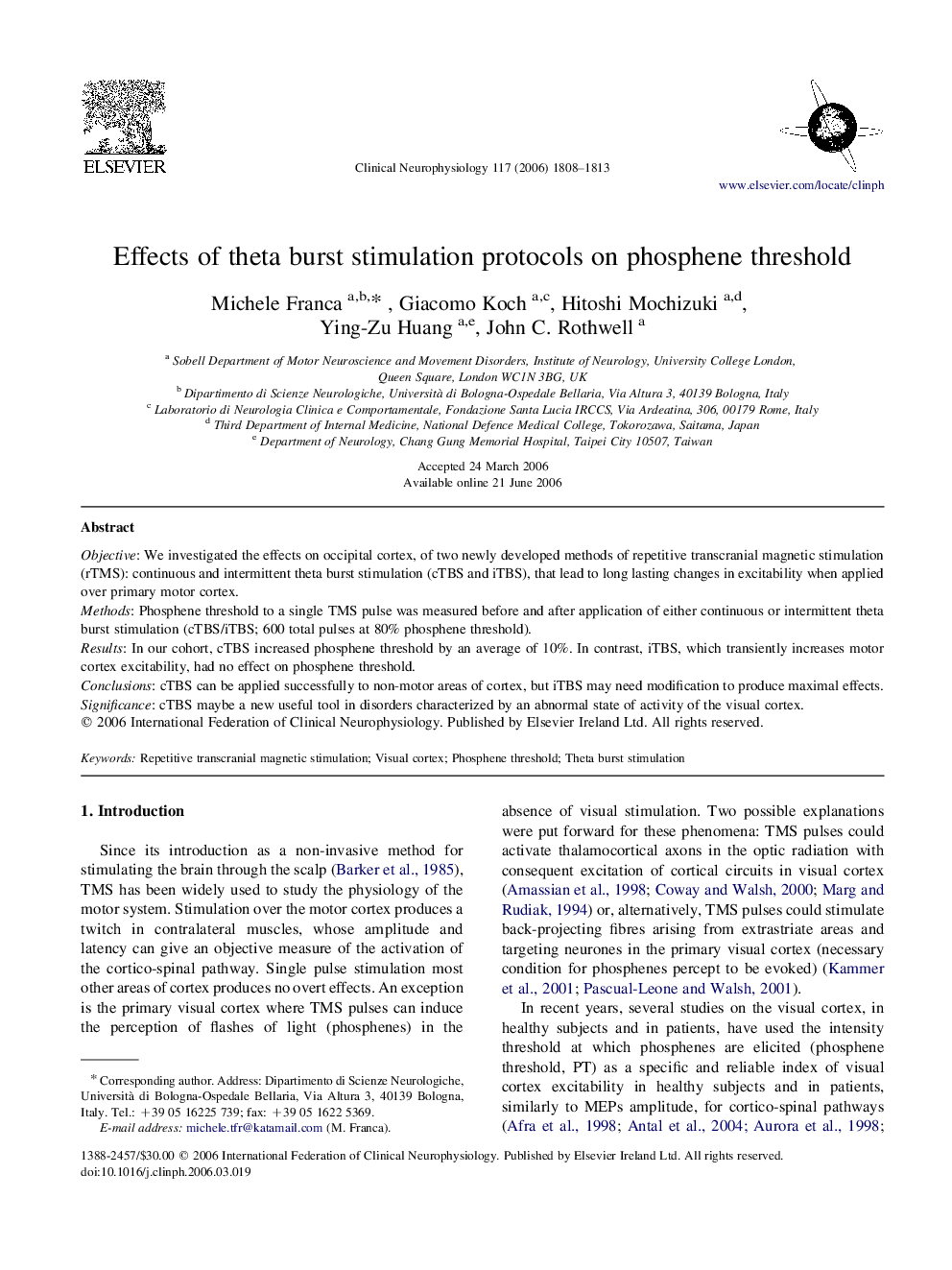| کد مقاله | کد نشریه | سال انتشار | مقاله انگلیسی | نسخه تمام متن |
|---|---|---|---|---|
| 3048672 | 1185090 | 2006 | 6 صفحه PDF | دانلود رایگان |

ObjectiveWe investigated the effects on occipital cortex, of two newly developed methods of repetitive transcranial magnetic stimulation (rTMS): continuous and intermittent theta burst stimulation (cTBS and iTBS), that lead to long lasting changes in excitability when applied over primary motor cortex.MethodsPhosphene threshold to a single TMS pulse was measured before and after application of either continuous or intermittent theta burst stimulation (cTBS/iTBS; 600 total pulses at 80% phosphene threshold).ResultsIn our cohort, cTBS increased phosphene threshold by an average of 10%. In contrast, iTBS, which transiently increases motor cortex excitability, had no effect on phosphene threshold.ConclusionscTBS can be applied successfully to non-motor areas of cortex, but iTBS may need modification to produce maximal effects.SignificancecTBS maybe a new useful tool in disorders characterized by an abnormal state of activity of the visual cortex.
Journal: Clinical Neurophysiology - Volume 117, Issue 8, August 2006, Pages 1808–1813